The purpose of Shamanism is to integrate conflicting aspects of the human psyche with each other, and the whole with the Cosmic Psyche, and to develop the power and self-knowledge to enable the shaman to achieve results that are beyond the abilities of the undeveloped, un-self-aware psyche. Integrating conflicting aspects of the human psyche is the basis of all character development, and is essential to achieving balance and happiness. It releases and channels those potentially limitless psychic powers that are inherent in all of us.
The difference between a healer and a shaman is that a healer is a person who is able to use the forces of light to effect a cure in the body, mind, or spirit of another, without using the forces of the Shadow. Because of the nature of some illnesses, this method is not always effective, and a shaman must be sought for a cure. A shaman is a healer who has walked up to the Underworld gates of his/her own personal hell and then walked in. He/she has confronted and conquered his/her self-created demons, such as fear, insanity, loneliness, self-importance, and addictions, has unflinchingly confronted his/her own Shadow self as well as the evil of others, and can successfully deal with forces of darkness equally with those of light. A shaman can do exorcisms and can reverse hexes and the results of black arts that have been used on a patient, because by dealing with one’s own Shadow and coming to terms with that Shadow self, one gains peace of mind and balance, and the black arts have no control over that person, for his/her personal fears and inner demons have already been dealt with. Both the shaman and the healer can effect cures, but only the shaman is trained in dealing with any type of black arts that may have caused illness. For clarification, a shaman is not a sorcerer, one who is trained in and uses only the black arts to accomplish their purposes. Many people in today’s society are calling themselves shamans without any knowledge of exactly what this means. If the would-be shaman does not have the ability to look at his/her own shadow side, he/she will not be able to follow the path of the shaman. He/she would never be able to confront or handle the results and/or intentions of the black arts.
A shaman’s medicine colors are black and white because he/she walks the world of Light as well as Shadow – the polarity of man’s existence. Black and white also represents the balance a shaman seeks to maintain, both inside himself/herself as well as bringing that balance to his/her clients. It is well expressed in the Eastern concept of yin-yang.
Bat is the Mayan and Aztec symbol for rebirth, and the totem animal for shamanism. Bat hangs upside down in the cave, just as humans are nestled upside down in their mothers’ wombs. In leaving the womb or the cave, each is forced to look at light and shadow. Bat embraces the idea of the Shaman’s death. In ancient traditions, the would-be-shaman was sent to a certain location to dig his/her own grave, and then spent the night inside that grave, totally alone. The grave opening was supported by limbs, covered by a blanket, and then filled over with dirt and debris. Absolute darkness and total silence quickly cause the initiate to be confronted by his/her fears. The basic idea of the initiation was to break down all former notions of “self”, and to cause the initiate to face his/her inner fears and demons. When the initiate is released from the grave, the old persona and ways of life of the one “who was put in in the ground” truly are dead and buried. A “new” person emerges, reborn, with the right BY INITIATION to be called a shaman, and to heal. During my initiation, I spent three days and two nights totally isolated within the grave, and it truly is a terrifying experience.
In modern times, as with so many ancient rituals and initiations, the Shaman’s Death is considered by society as too severe and dangerous, and so the actual rite is seldom seen or heard of. But the right to be called a shaman is no less contingent on the notion of the death of the old “self” than it was in ancient times. One does not choose to walk the path of a shaman, the Spirits call a person to walk the path of a shaman, usually by a traumatic, life-altering experience. This experience may be sufficient to constitute an initiation; however, the psychiatric wards are full of uninitiated shamans, who had a traumatic experience and no one to guide them to understanding! The understanding unfolds as we work with the Shadow self. The Underworld is the arena. Because the shaman has walked through the Underworld of the Shadow and knows firsthand the pain involved in breaking the stranglehold of inner darkness, a true shaman always has compassion for the paths that others must walk.
Psychology and The Shadow
In order to understand the Shadow, it is important to understand a little bit of psychology. Carl Jung, one of the fathers of current psychology, was actually a student of the occult. His teachings closely parallel the teachings of the Huna in Hawaii on the three selves, referred to in my writings as Anatomy of A Magical Human. His concept says that the aspects of the human psyche are named the Ego, The Shadow(everything in the psyche apart from the conscious Ego), the Anima (a man’s buried feminine side), The Animus (a woman’s buried masculine side), the Personal Unconscious, the Collective Unconscious, the Persona (the cloak around the Ego) , and the Self (The center and ultimate foundation of our psychic being). The greater part of the psyche is unconscious, out of the reach of our conscious Ego, but it strongly influences the Ego’s behavior without our realizing it. Unconscious is also connected to the collective conscious (an individual outcrop of it, so to speak) and it often knows better what our real needs are than the Ego does. The Ego, on the other hand, possesses gifts which the unconscious lacks – the ability to analyze and categorize incoming data, to think by logical steps, and to communicate with the Ego by the precise and subtle means of speech.
When communication between the Unconscious and the Ego is faulty, conflicts emerge, leading to all kinds of problems, such as tension, neurosis, psychosis, schizophrenia, and nervous breakdowns. What is needed, obviously, is greatly improved communication between the conscious Ego and the Unconscious. The Ego must become aware of the fact that the Unconscious has messages for it, then the Ego must learn how to interpret those messages, which the unconscious can only express in symbols. The Unconscious is all too eager to communicate. Obviously, the whole content of the Unconscious can never be made directly available to the Ego, but a great deal of it can, enough to remove all major conflicts and to enrich significantly the Ego’s range of effectiveness, both by increasing the amount and variety of incoming data on which it can act, and by teaching it the lesson that it is not the only, or even the most important, function of the total psyche. The more the Ego learns this lesson, and acts on it, the closer it comes to activating the central self and handing over control to it. The work of the Shaman is to integrate conflicting aspects of the psyche with each other, and the whole of the Cosmic Psyche, and to develop the power and the self knowledge to enable the shaman to achieve results that are beyond the abilities of the undeveloped, un-self-aware psyche. Integrating conflicting aspects of the human psyche is the basis of all character development. It releases and channels those potentially limitless psychic powers which are inherent in all of us.
What Is The Shadow?
The Shadow is the entity created in our psyche when we attempt to separate good from evil. It is literally the embodiment of all the impulses and qualities we have thrust into the unconscious because the Ego finds them unacceptable. It is all that we are that we feel we should not be – sexual, angry, hostile, vulnerable, masochistic, self-hating, guilty, weak, etc. For men, showing compassion and emotion may be included, if these things are not acceptable to express in your family or culture. Social ideas, such as stereotypes about physical appearance, life roles of men and women, and sexual and racial prejudices reside here. Shadow also includes positive traits that you may have denied, such as power, justice, sexuality and creativity, as well as interest in and desire to practice shamanism, paganism, magick, etc. Anything you, your family, or society (consensus reality) deems as “forbidden” or “sinful” may be found in your Shadow Self. These things are not “evil”, they simply are not perceived as being “acceptable” – again by “consensus reality”. Each time we allow our thoughts to dwell upon strong, negative feelings, we add to the strength of our Shadow Self. In its mildest aspect, it is that part of us that we are uncomfortable accepting and hope that no one else sees. In its most radical aspect, it becomes Dr. Jekyl and Mr. Hyde,where two totally separate aspects and personalities share a single biological body, each oblivious to the other, but each having their outlet into the physical realm.
Shadow Self has also been called the Guardian of the Threshold. It stands in the threshold gate between the Subconscious and the Ego, refusing us passage until we have looked it in the face and acknowledged our own essential humanness. Some of the Archetypes of Gods and Goddesses associated with the Underworld (Shadow Self) are Hel, Hecate, Hades, Janus (a really good example of the Guardian), Persephone, Rhea, Cronus, Isis, Anubis, and the Crone. This may not be a complete list of all Gods and Goddesses associated with the Underworld, but it should give you a start, if you are interested in further study.
No shaman can deny the existence of the Shadow self. This being is very much alive and active in the OtherWorld realms. The shaman will encounter the Shadow self and its sly opposition when journeying, especially if the journey is for soul retrieval, healing, or problem solving. The shaman cannot attack the Shadow with the idea of destroying it, but rather must recognize it as a vital, important part of himself/herself. By confronting the Shadow self, the shaman learns to work with it, channeling its energy into shamanic ritual. A shaman knows that both so-called positive and negative energy are required for balance. A healthy person is a balanced person. By separating good from evil, we set up a conflict within ourselves that presages a potentially destructive downfall. Let me clarify here. To make moral judgments, “right” or “wrong”, “good” or “evil”, based on consensus reality within any social structure is absolutely necessary to maintain law and order. But when we internalize that judgment and reinforce it with strong negative emotion aimed at ourselves, the Shadow grows and becomes more difficult to maintain. Remember the Wiccan adage: “To light a candle is to cast a shadow”. Any time a polarity is over-lived, without having been balanced by its counterpart, an eruption of the counterpart can be expected. A “boogey man” is created that begins to haunt us and make us fearful. Remember the old movie-line, “Who knows what evil lurks in the hearts of men? The Shadow knows!!!” It knows the deepest, darkest, ugliest secrets of your very existence. The more we separate ourselves from it, the more this “boogey man” grows in darkness, size and power. No fear is stronger than the fear of our own Shadow, and nothing is more destructive than the defenses we adopt to avoid confrontation.
Ways That We Avoid Confrontation With the Shadow
There are many ways that we use to run from the Shadow, and there are many benefits that we get from doing so. Or so we think. As I was told by one of my disincarnate mentors, “Avoidance never was empowerment. Avoidance never leads to evolution.” Avoidance is like Flu medication, it masks or curtails the symptoms, but when the medication wears off, we are well aware that the illness still exists. True self-empowerment comes from overcoming the problem, not just avoiding it. What we are really doing is denying ourselves the opportunities for growth we might otherwise have had, for Shadow is a TREMENDOUS teacher. When we confront the Shadow, we are forced to face ourselves, and learn about ourselves. In the Native American teachings, this is “Coyote Medicine”. The Shadow Self is like a coyote. It lurks in the shadows and does its mischief. If it knows that it is glimpsed, for even a second, it slinks away. Coyote ALWAYS teaches you something about yourself, though you may or may not like the lesson. If you listen, the lessons may come easier, but if you turn your back and try to run, Coyote will dog your trail and bite you in the butt!
Here are six major ways that people run from the Shadow, what they get out of running from it, and the backlash that may hit them.
1. Some people deny it and never approach the confrontation at all. They think that if they don’t look at Shadow, it doesn’t exist. A false sense of strength is produced. They immerse themselves in hard work, good deeds, and charity – anything to keep themselves so busy they cannot see the Shadow. They become fanatical, living saintly lives driven by their fear. People see all the good they are producing and think that they are wonderful people, and would never believe anything bad about them. But this is a time bomb, just waiting to go off. Sooner or later, Shadow will come forth, to one degree or another. This is a classic example of wonderful people doing the sudden, unexpected, and tragic.
2. Some people try to destroy the Shadow through drugs and alcohol. Forgetfulness is the motivation for this strategy. They think that by “checking out”, they can escape. But every time they come back, Shadow is waiting for them, and they must quickly escape again. The price they pay is the destruction of their lives and those around them whom they love. They lose their family, friends, jobs, security – the Shadow grows.
3. Claiming to be “enlightened” and to have “gone beyond” these things is a strategy favored by many “spiritual” people. They may live lives of asceticism and celibacy, claiming to no longer have shadow qualities, such as sexuality, anger, passion, desire, and self-interest. This is known as the “Savior” complex. Priests, ministers, gurus, and “enlightened masters” who adopt a posture of transcendent superiority have a great appeal to people with similar defense systems, who are able to escape their personal confrontations by identifying as members of an elite, “enlightened” group. Thus are cults born and perpetuated. Many religions fall under this category. This strategy produces a false sense of self-righteousness. But deep down inside, they are always afraid that someone will expose them, causing them to fall off their pedestal.
4. Some people become “superhuman”, driving themselves to feats of self-sacrifice and accomplishment to “atone” for the Shadow Self, sometimes even to the point of masochism. They may have an air of superiority about them, but deep down inside, they are always afraid that someone will find out their weaknesses. They are not as strong as they want to be or try to be, and could crumble at any moment, either physically, mentally, or spiritually. This a classic problem among teenagers under tremendous pressure at home.
5. Some will admit Shadow Self, confessing it as a weakness or illness. “That’s just the way I am, and I am powerless to change or control it. I am doing the best I can. I am trying, really.” Sympathy and freedom are what they get out of this strategy – others won’t blame them when things go wrong. They “know it is their fault, and they really are trying, but they just can’t quite measure up – everyone just has to be patient with them.” And so the misbehavior continues. Conversely, by claiming that it is their fault, they don’t have to fix it because it diffuses the confrontation. The backlash is that they are too weak to overcome anything, and they suffer terribly from guilt, to the point of developing psychoses and needing counseling to deal with life.
6. Some will use projection – assigning these Shadow qualities to some other person or group (as in “the Devil” made me do it.) A spouse or co-worker may accuse you of being out of control or hard to work with, when everyone can see that it is actually them that is out of control or hard to get along with. Always be aware of the mirror. In every situation, are you mirroring for the other person or is the other person mirroring for you? Whose Shadow Self is showing here? The copout people use is that it is someone else’s fault- they did it to you. If they would just stop what they are doing, everything would be fine. You are not responsible, and cannot help what happened. The backlash is loss of relationships important to you. You are always mad at someone, and you may develop paranoia.
We’ve talked about the Shadow Self, including what it is, how its created, how it expands and becomes empowered, and ways we try to avoid dealing with it. This is classic human nature. We all have a Shadow Side. But how do we deal with our Shadow Self? And what difference does it make?
There are several steps we can take to gain control of Shadow Self and our lives.
1)Become aware of when Shadow is around. By becoming aware of when you are being sideswiped by Shadow, you begin to see Shadow’s effects in your life. The Shadow becomes more visible.
2)Name the Shadow. Come up with a cute short name for the specific behavior of each Shadow that haunts you, such as Mr. Mischief, the Judge, Sleazy Sue, or whatever is appropriate. This helps you to be more aware of how you feel or act when this Shadow figure is around.
3)Own your Shadow. Ask yourself how you contributed to this situation occuring. Remember you are the Creator in your life, not the victim! Own your own emotions and actions.
4)Resist the temptation, once you become aware of Shadow and its effects in your life, of pointing out other people’s shadows to them, or trying to “fix” their lives for them. This is a very personal issue, and not one someone else can help with.
The difference it makes is how much control you actually have over your life, and how much awareness you have of your reality. When you begin to be aware of these things, you soon realize that reality truly is an illusion, one that can be changed by each of us at will, according to our needs. When we change our realities individually, one at a time, to enable us to evolve and grow, we affect the illusion of consensus reality around us, subtle at first, but the compound effect can bring about a quantum leap in evolution for mankind.
Unlike the modern man, shamans are trained in societies and cultures that have for centuries followed animistic traditions. Animism is a world of duality, where all things have an existence which is physical and material, and an existence which is immaterial and supernatural. In the shaman’s world, the psyche, including the Shadow Self, are separate living, breathing entities, like the Selves of Huna, that must be met, understood and integrated like any other “helper”. To accomplish this, the would-be shaman is subjected to extremely traumatic rituals designed to force the confrontation between conflicting aspects of the psyche. The unsuccessful attempt at integration by forced confrontation can easily leave the individual in the grasp of insanity. Those who succeed are shaped into beings of incredible stamina, wisdom and power. They have walked through the Valley of the Shadow of Death, and have earned the right to take up residence there.

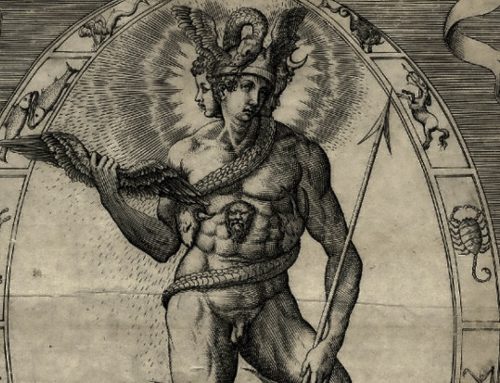
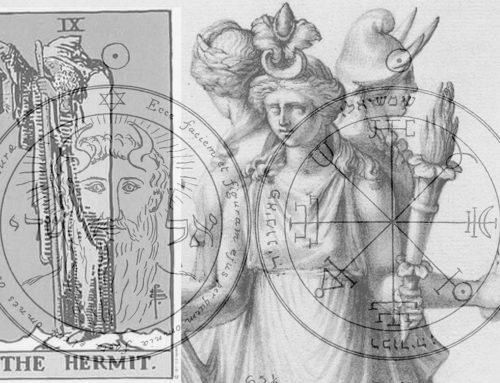
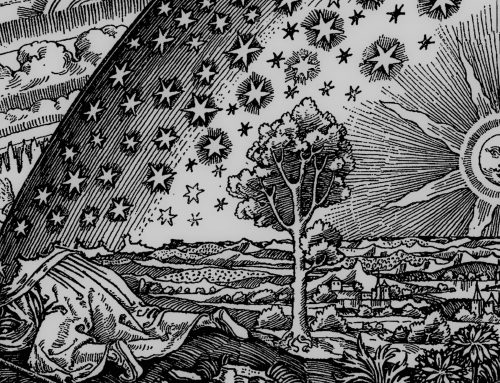
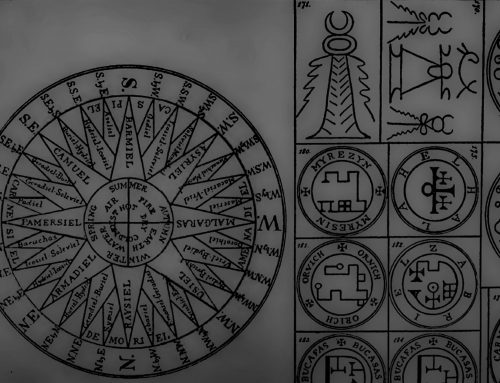
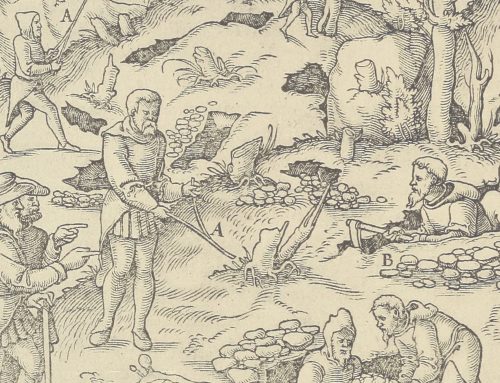
Leave A Comment